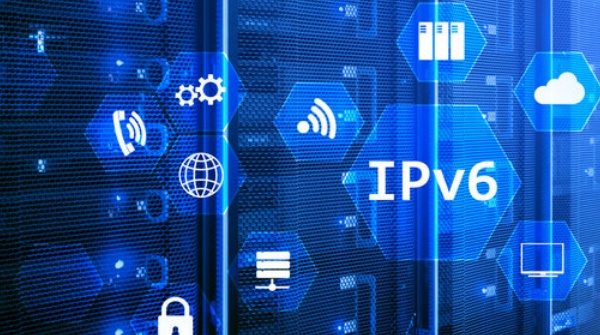MIIT interprets the 3-year special action plan for IPv6 traffic increase, requiring the support of home terminals

It can provide sufficient network address resources and broad innovation space. It is a globally recognized next-generation Internet business application solution.

The Ministry of Industry and Information Technology and the Central Cyberspace Administration jointly issued the "Three-year Special Action Plan for IPv6 Traffic Increase (2021-2023)" (hereinafter referred to as the "Special Action Plan") on July 9. This regulation puts forward 13 work requirements and task measures from four aspects: infrastructure, application ecology, terminals, and security. The Ministry of Industry and Information Technology today issued an interpretation of the plan.
The Ministry of Industry and Information Technology stated that IPv6 is the next-generation Internet protocol version formulated by the International Organization for Standardization IETF (Internet Task Force). It can provide sufficient network address resources and broad innovation space. It is a globally recognized next-generation Internet business application solution. my country has always attached great importance to the development of IPv6 and issued the first Action Plan as early as 2017.
1. My Country's IPv6 Construction Achievements
As of the end of April 2021, the number of users in China who have obtained IPv6 addresses has increased from 74 million at the end of 2017 to 1.54 million; backbone networks, mobile core networks, metropolitan area networks, and Internet backbone direct connection points and other network infrastructures fully support IPv6 It also carries IPv6 services; more than 50% of the available cloud service domains support IPv6, and the content delivery network (CDN) IPv6 service acceleration capability has covered major provinces and cities across the country; mainstream mobile terminals in the market have all supported IPv6, China Telecom, China Mobile, China Unicom And other basic telecom operators have also completed all qualified existing home gateway IPv6 upgrades; the IPv6 traffic of the LTE core network and fixed network exceeds 10Tbps. It can be said that China's IPv6 network "highway" has been fully completed.
At the same time, officials stated that the proportion of IPv6 traffic in my country still lags far behind the world's leading countries. There are problems such as low concentration of IPv6 in commercial Internet applications, insufficient IPv6 support capabilities of home terminals, and application infrastructure IPv6 service performance needs to be enhanced.
2. Two Characteristics of the "Special Action Plan"
One is to focus on policy continuity. The "Special Action Plan" is based on the implementation results of the previous series of "IPv6 Network Readiness" and "IPv6 End-to-End Connectivity Improvement" series of special actions, summing up experience, finding deficiencies, analyzing root causes, and focusing on shortcomings, weaknesses and development in the new era. Direction, put forward the development goals and key tasks for the next three years. From "network readiness" to "end-to-end connectivity" to "traffic enhancement", it reflects that the development of IPv6 in my country fully follows the technological development law of network evolution and progresses step by step. The corresponding development priorities are determined for different development periods to ensure policy compliance. Continuity, stability and sustainability.
The second is to focus on the synergy of links. In addition to continuing to put forward new mission requirements in the fields of network infrastructure, application infrastructure, terminals, and security, the "Special Action Plan" also focuses on commercial Internet applications, industrial Internet, smart home system platforms, and "IPv6+" network technology innovation. Deployments are made to coordinate the promotion of all key links to achieve IPv6 traffic increase and high-quality development.
3. The "Special Action Plan" Puts Forward 3 Work Priorities
1. Improve the IPv6 service capabilities of the network infrastructure. Newly-built Gigabit optical networks, 5G networks, etc. shall simultaneously deploy IPv6; newly opened home broadband, enterprise broadband and private line services should support IPv6, and in principle no longer provide IPv4 single-stack private line expansion; optimize the IPv6 single-stack private line activation process and provide preferential tariffs.
2. Optimize the IPv6 acceleration performance of the content distribution network, complete the IPv6 upgrade of all CDN nodes, and support the IPv6-based content return function; the newly added CDN nodes should support IPv6 by default; the IPv6 application acceleration performance should not be lower than IPv4.
3. Expand the IPv6 coverage of the cloud platform, and complete the IPv6 upgrade and transformation of all available domains in the public cloud; newly-added cloud products should support IPv6 by default; the performance of all cloud services should not be lower than IPv4.
4. Speed up the in-depth transformation of data center IPv6 and improve the data center IPv6 service activation process; newly-built data centers should support IPv6 by default.
5. Enhance the IPv6 resolution capability of the domain name resolution server, continue to improve the IPv6 domain name resolution capability, and optimize the IPv6 domain name resolution performance. Through these measures, the accelerated coverage of IPv6 services nationwide has been achieved, laying a solid foundation for IPv6 service innovation.
The "Special Action Plan" also proposes that in terms of application ecology, it is required to deepen the upgrading of commercial Internet websites and application IPv6, promote the TOP100 commercial websites and applications full service, full function priority to use IPv6 access, increase the IPv6 concentration, and complete all provincial administrative units IPv6 coverage. In addition, it is also necessary to speed up the upgrade and transformation of platform software and hardware IPv6 on the industrial Internet, and give priority to supporting IPv6 access.
In terms of home terminal equipment, the "Special Action Plan" puts forward specific requirements: First, it requires various terminals including home routers, smart TVs, set-top boxes, smart home terminals, and IoT terminal modules to accelerate support for IPv6 and increase the proportion of support. ; Second, it is clearly required that terminal equipment with IP address allocation function should enable IPv6 address allocation by default; third is to require basic telecommunications companies to formulate work plans to accelerate the upgrading and replacement of old terminal equipment; fourth is to require e-commerce platforms to continue to strengthen publicity To guide the work, give priority to recommending to users terminal equipment that supports IPv6, etc.